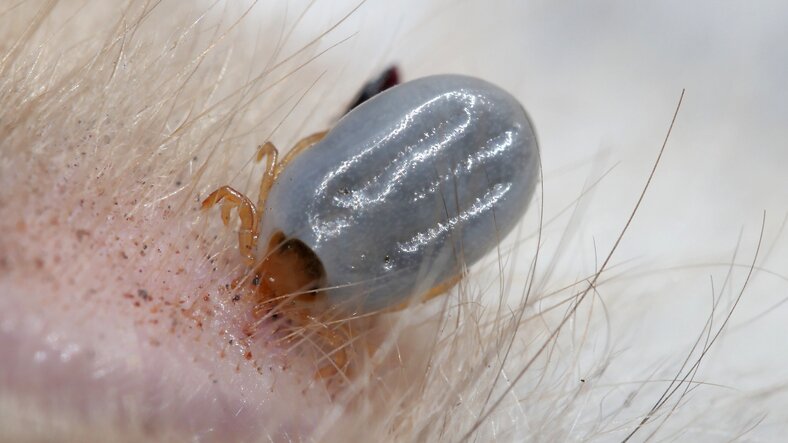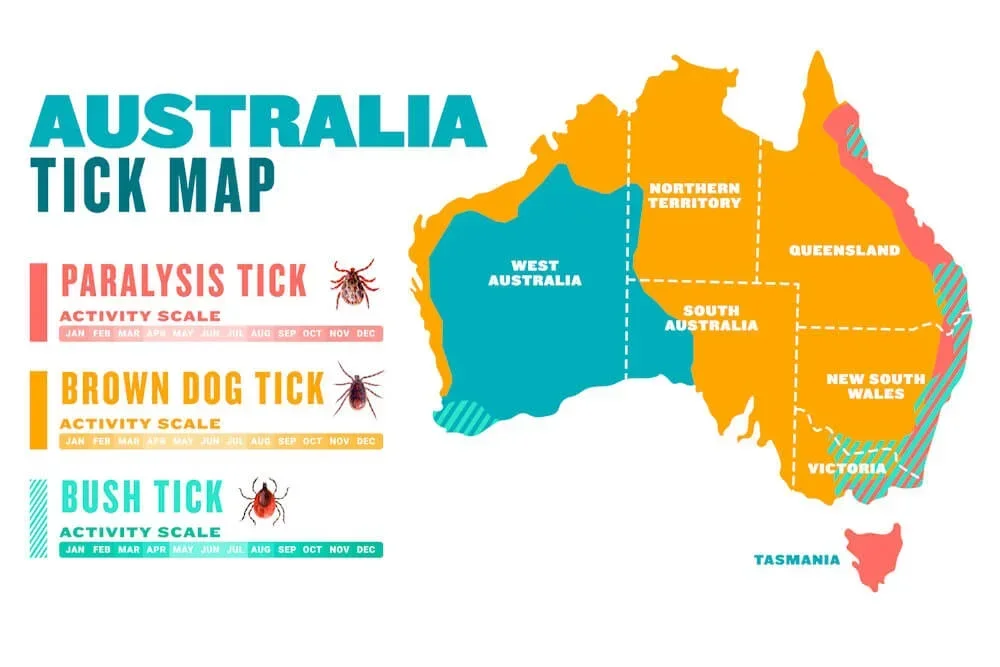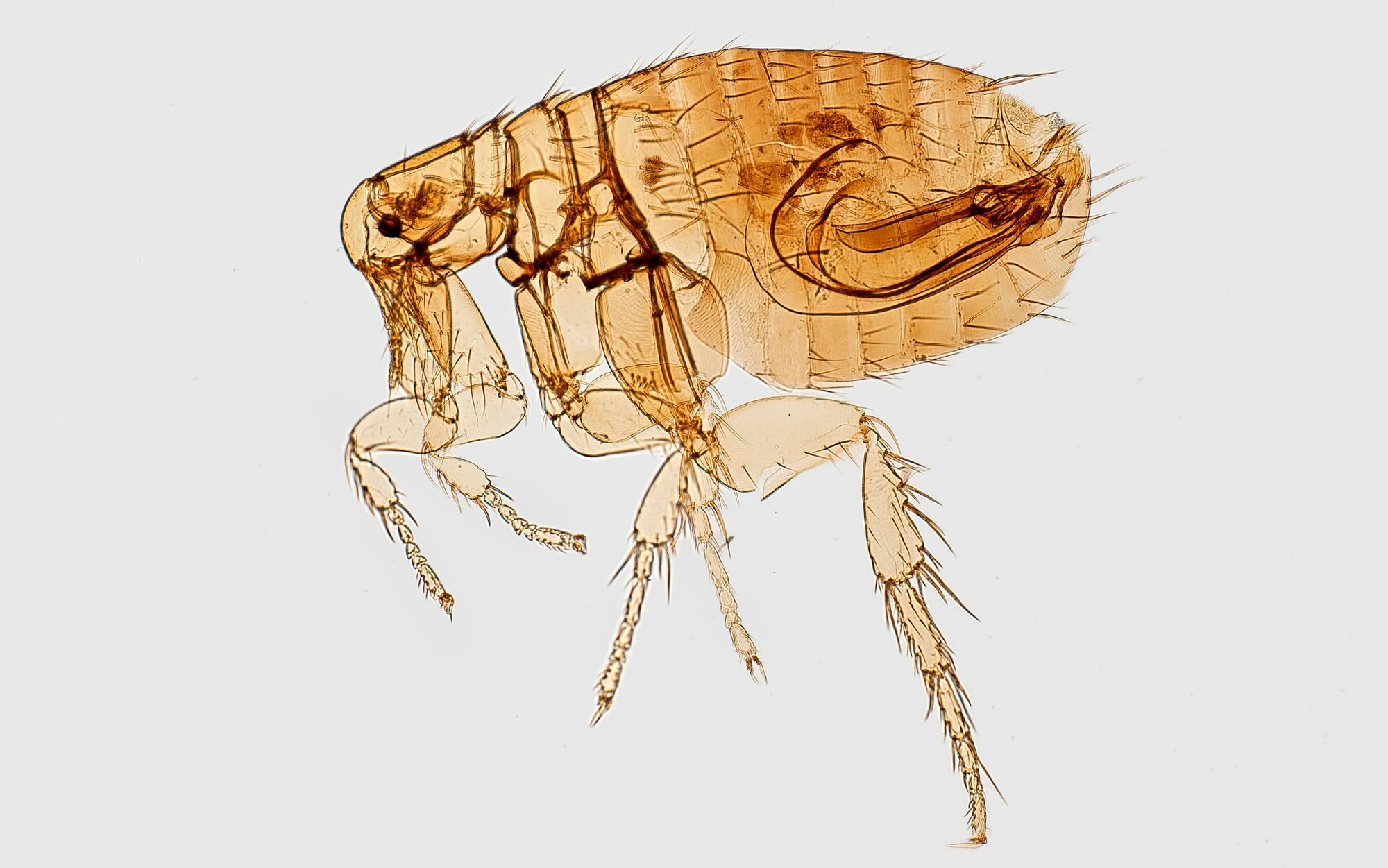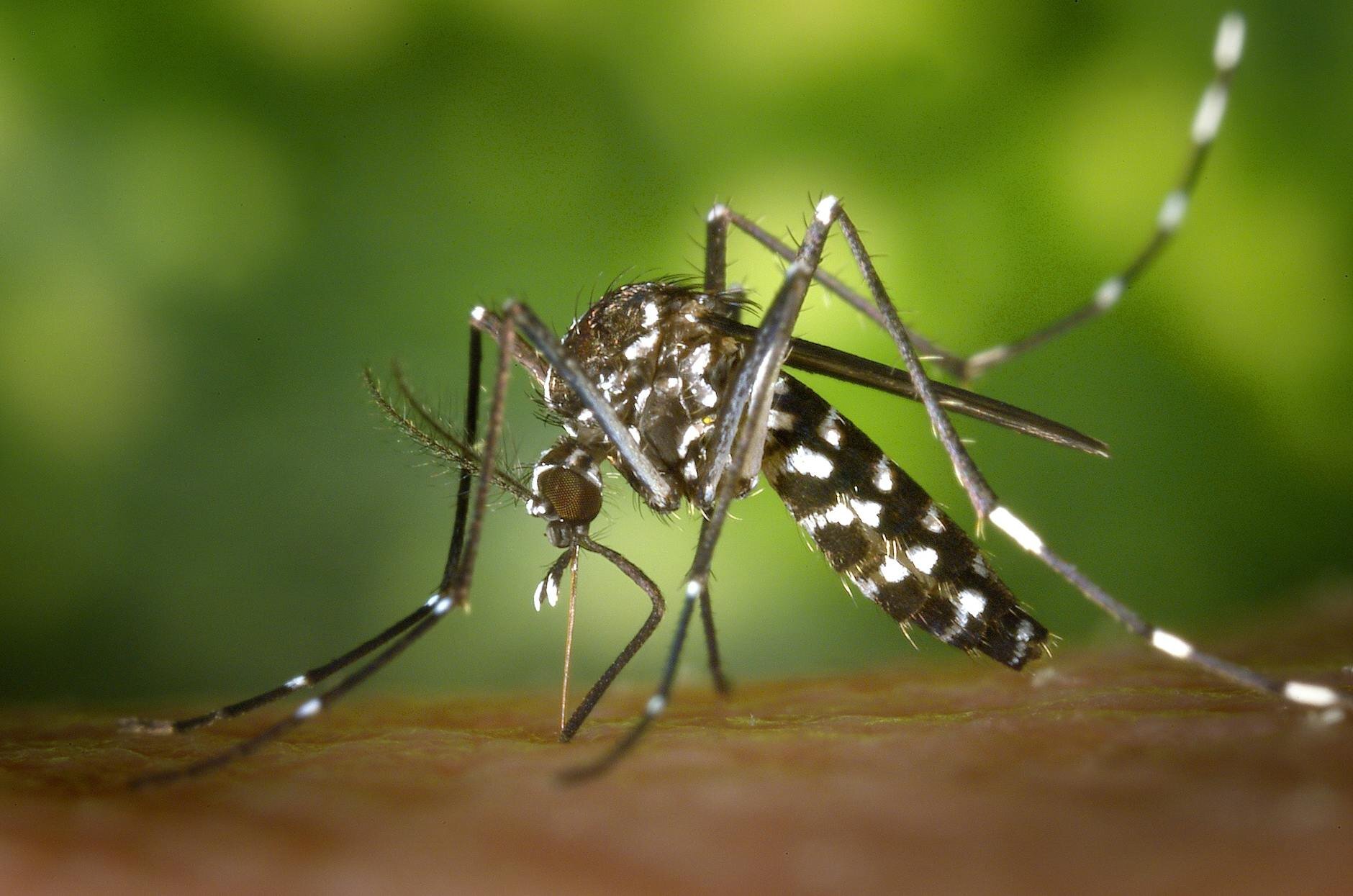Last Updated: 27/08/2025
Your Guide to Flea, Tick and Worming for Dogs
Fleas, ticks, and worms pose serious risks to your dog. Our vet-approved guide explains how to identify these nasty pests and compares the best preventative products available. Find the right solution to keep your dog protected.
Author: Dr Belinda Stancombe BVSc (Hons)
Reading Time: 6 minutes - short read
One of the most important responsibilities of pet ownership is parasite prevention. Fleas, ticks, heartworm and intestinal worms can cause very serious illnesses and, in some cases, even death. Thankfully they are completely preventable!
Our Vet Squad, have put together a guide to help you identify these nasty pests, recognise the symptoms, and see which preventatives are best suited to your dog. In the case of parasites, prevention is always better than the cure!
In this article
Ticks on Dogs

There are three main tick species that affect dogs in Australia: The Brown Tick, Bush Tick and Paralysis Tick. Ticks can occur in many areas of Australia, but are more prevalent along the east coast. Ticks seek out a host and once attached begin to feed on off the animals blood.
Bush Ticks are usually not life threatening but may irritate your dog where they latch on to feed. The Brown Dog Tick, while not harmful itself, can transmit tick-borne diseases such as Ehrlichiosis, a bacterial disease that recently occurred in Australia. Paralysis Ticks however, are the major concern in Australia as they can be deadly.

Paralysis Ticks
Paralysis Ticks are of concern year-round but are more prevalent in the warmer months of Spring and Summer. Once attached to a host, the Paralysis Tick secretes a deadly toxin that causes an ascending paralysis in dogs, cats and other animal species.
If a tick is found on your dog, it is important to remove it as soon as possible. A Tick Twister Tool can make removing a tick at home a lot easier but if you are not confident, then leave it to the veterinarian or veterinary nurse to remove.
Identification of the species of tick is important to know if your dog is at risk. Ensure that any ticks removed from your pet are identified by a veterinarian to know if it is a paralysis tick. Even after a paralysis tick has been removed, a dog's symptoms may worsen and develop further because the toxin is still present in their system. Paralysis ticks can be deadly so if your dog is showing signs of tick paralysis then immediate veterinary treatment is required.
Signs of Tick Paralysis:
- Weakness or Loss of Coordination in Back Legs
- Change in sound of Bark or Voice
- Loss of Appetite
- Drooling
- Trouble Breathing
- Coughing
- Vomiting, Retching and Regurgitation
When it comes to ticks, prevention is better than cure. Ensuring your dog is covered with tick prevention year-round is the best way to protect your fur baby from deadly tick paralysis.
Pet Circle Vets recommend daily tick searches regardless of whether you are using a treatment, particularly if you live in a tick prone environment.
Brown Dog Tick
Ehlichiosis, spread by the Brown Dog Tick, was first detected in the Kimberly Region of Western Australia in 2020 and has since spread to other areas of Australia, with the Northern Territory and Western Australia most heavily affected.
Transmission occurs when an infected tick bites a dog and transmits the Ehrlichia canis bacterium. Symptoms include fever, enlarged lymph nodes, bleeding from the nose, lethargy and inappetence. This disease unfortunately, has a high mortality rate, and is particularly deadly in younger or older dogs that are immunocompromised.
If you are planning to travel or live in high risk area, it is recommended to use a Seresto Collar in conjunction with an oral or topical tick preventative to protect your dog against transmission.
For more information read our veterinary written articles Tick Paralysis in Dogs and Cats and Ehrlichiosis in Australian Dogs.
Recommended Tick Preventatives
Fleas on Dogs

Fleas are small, wingless, bloodsucking insects that live on your dog's body and lay eggs in the surrounding environment. There are four life stages of a flea: egg, larvae, pupae and adult. Of all these phases, only the adult phase occurs on the host (your dog!). Eggs are laid in the environment - particularly in soft warm fabric such as carpets, pet beds, and blankets. That is why it is so hard to get rid of fleas: a new wave of juvenile fleas can emerge after you've killed the initial population with a flea treatment.
Despite your best efforts, your dog may become infested with fleas through contact with other animals, or fleas that are roaming around in the environment. It's not always easy to spot fleas in your dog's fur, as they are swift and expert hiders! The best places to spot live fleas are usually over the rump or base of the tail in dogs. You may never actually see live fleas - instead, something to look for is flea dirt. Flea dirt is actually flea faeces, or digested blood (Yuck!).
For more info about flea prevention, see our article: How to Treat a Dog with Fleas.
Recommended Flea Preventatives
Heartworm in Dogs

Heartworm is a blood parasite transmitted via mosquitoes. When an infected mosquito bites a dog, it injects baby heartworm larvae, known as microfilaria into their blood. These microfilariae make their way to the heart, where they mature and grow into adult heartworm.
This insect-borne method of spreading is the reason why heartworm is more prevalent in tropical and warmer environments: more mosquitoes equals, more heartworm. Unfortunately, this also means that indoor-only animals are still at risk of catching heartworm, as mosquitoes can easily find their way inside. Symptoms can take months to appear and if left untreated, can be life threatening. Even the treatment of heartworm is very difficult and dangerous. Fortunately, heartworm is incredibly easy to prevent.
If your dog's heartworm treatment has lapsed or their preventative history is unclear, then a heartworm snap test with your veterinarian is required prior to starting on any prevention. This test is quick, easy and only requires a drop of dog blood, and your veterinarian is able to determine if your pet has been infected. It can be dangerous to start on heartworm prevention without first getting a negative heartworm test. If your dog has signs of heartworm disease, then an appointment with your veterinarian as soon as possible is recommended.
Signs of Heartworm Infection:
- Chronic cough
- Exercise intolerance
- Weakness
- Collapse
Along with monthly heartworm preventatives, there is also an annual Proheart Injection available from your local veterinarian.
For more information read our veterinary written article Heartworm Facts Every Pet Owner Should Know.
Products that prevent heartworm
Intestinal Worms in Dogs

Intestinal worms range from small, microscopic strongyles to foot-long, squirmy tapeworms. Your dog may contract worms by encountering other infected animals, drinking contaminated water or eating food that contains a worm parasite.
Contrary to popular belief, an itchy bottom is not a common sign of worm infestation. Scooting or an itchy bottom is more likely caused by Anal Gland Issues or a skin allergy.
How To Tell If Your Dog Has Worms:
- Diarrhoea (sometimes with blood)
- Worms visible in stool or around anus
- Weight loss
- Distended (pot-bellied) Tummy
- Vomiting
- Weakness
- Anaemia
It is important to be aware that some worming products do not kill hydatid tapeworm. Tapeworm is large and more difficult to kill than smaller worm species, requiring a specific medication called Praziquantel. The selected products below kill all important worm species, including tapeworm.
For more information, read through our article all about Worms in Dogs.
Mites

Mites are rare and usually only occur in juvenile or immunocompromised pets (ie, dogs with skin allergies). Mites of concern in Australia include the skin mite Demodex and ear mite Otodectes. Sarcoptes (scabies) is another mite that may be found in some parts of Australia but is comparatively rare.
Demodex causes patchy hair loss, particularly over the forehead or eyelids. It is mostly seen in warmer areas of Australia. Demodex usually only affects puppies and dogs with hormonal conditions (such as hypothyroidism), or skin allergies. It is particularly common in Staffie breeds, due to their predisposition to skin allergies.
Otodectes (Ear Mites) cause intense itchiness in the ears, and may lead to a brown, crusty discharge. It is commonly seen in puppies and kittens.
Products that prevent mites
Ultimately, safeguarding your dog from parasites is one of the most critical aspects of their healthcare. As this guide shows, pests like fleas, ticks, heartworm, and intestinal worms pose serious health risks that are easily avoidable with the right preventative measures.
A proactive approach is always better than a reactive cure. Consulting with our Vet Squad or your veterinarian will help you create a tailored protection plan, ensuring your canine companion remains happy, healthy, and free from these nasty invaders year-round.
Articles recommended for you
Our vet authored guide to the benefits of feeding your dog fresh food plus tips and advice for introducing it into their regular menu.
See our guide to protecting your pet from parasites from our vet team.
Thinking of getting a fish? Check out our guide for setting up a tank and home care tips!
Looking to understand horse feeds better? This comprehensive guide covers feeding recommendations for horses of all ages and disciplines.
Does your pet suffer from anxiety? Check out our Vet-guide for treatment options to help your pet.
History
Our experts continually monitor the health and wellness space and we update our articles when new information becomes available.
Fri 28 Oct 2022
Written by Dr Belinda Stancombe BVSc (Hons)Dr Belinda Stancombe BVSc (Hons)
Veterinarian
Dr Belinda graduated from The University of Queensland in 2009 and has worked as a Small Animal Veterinarian for over 10 years in South East Queensland. She also has experience as a telehealh consultant, providing veterinary advice for online customers.She has a special interest in animal behaviour, preventative health, the human-animal bond and internal medicine. Outside of work hours she is closely affiliated with a kitten rescue and is also a devoted carer of orphaned rescue kittens.

